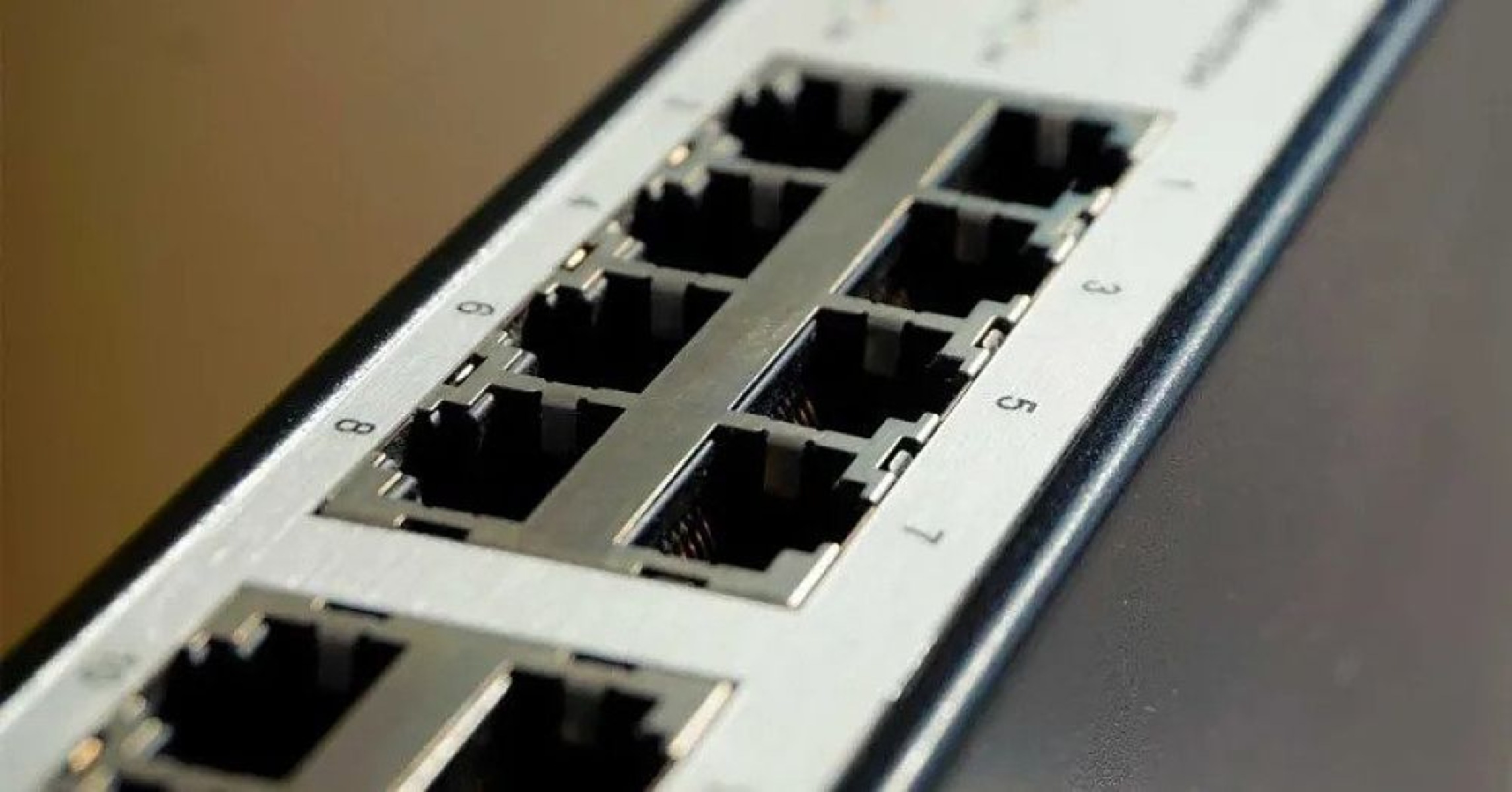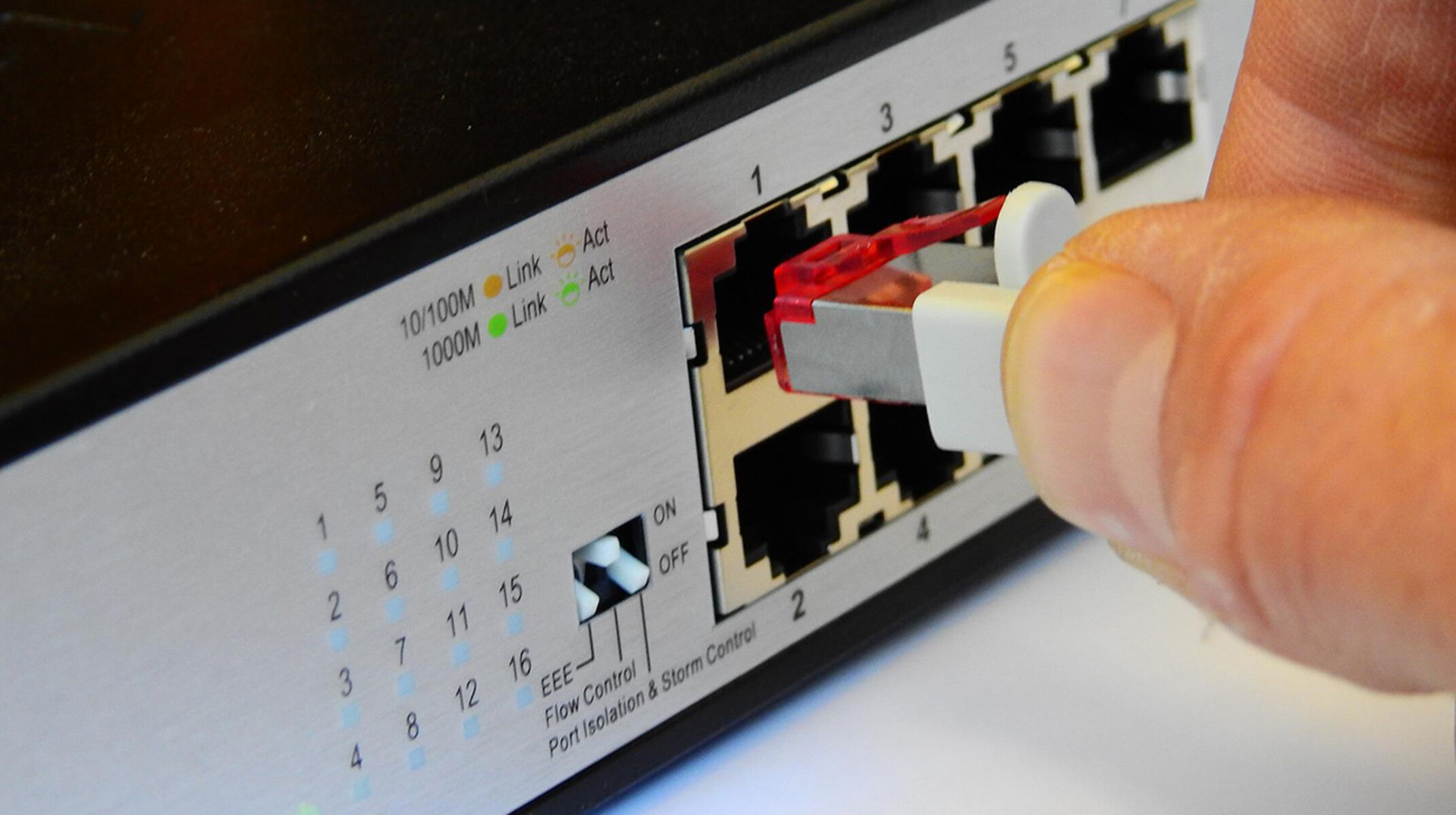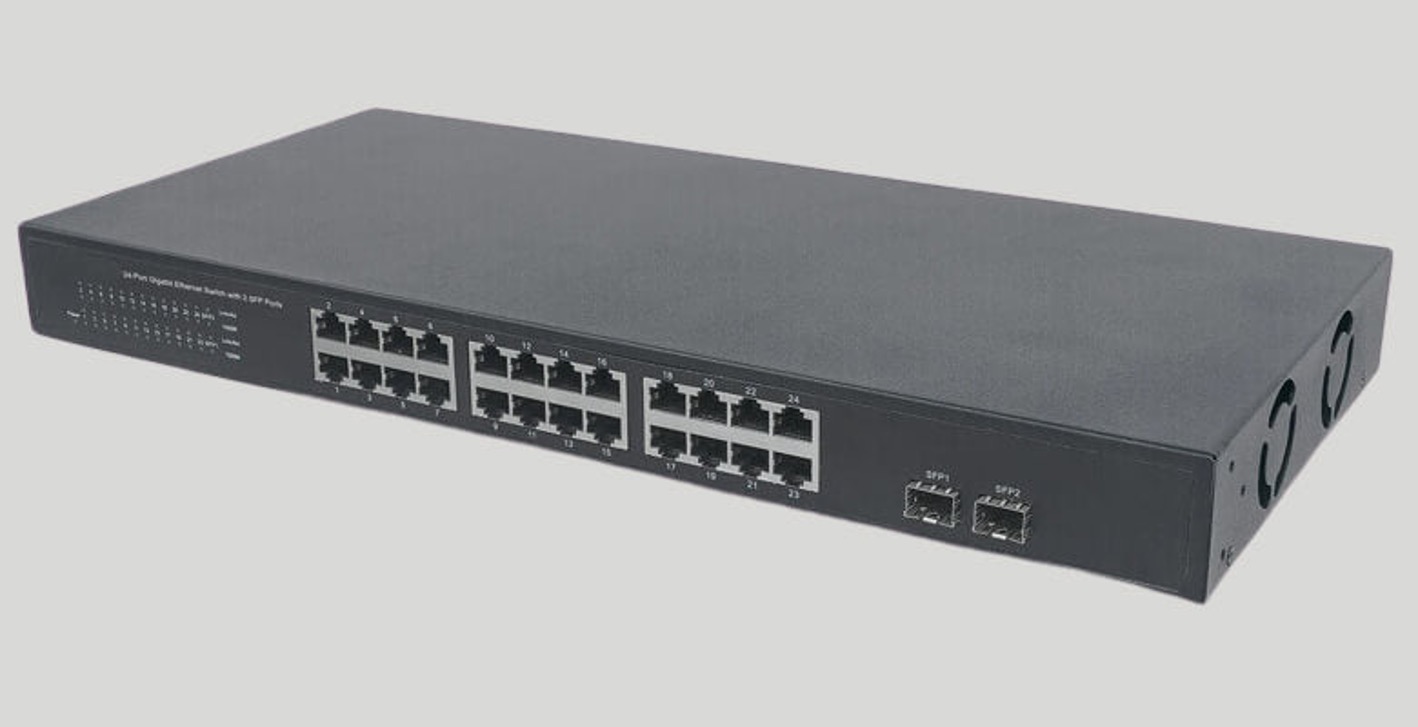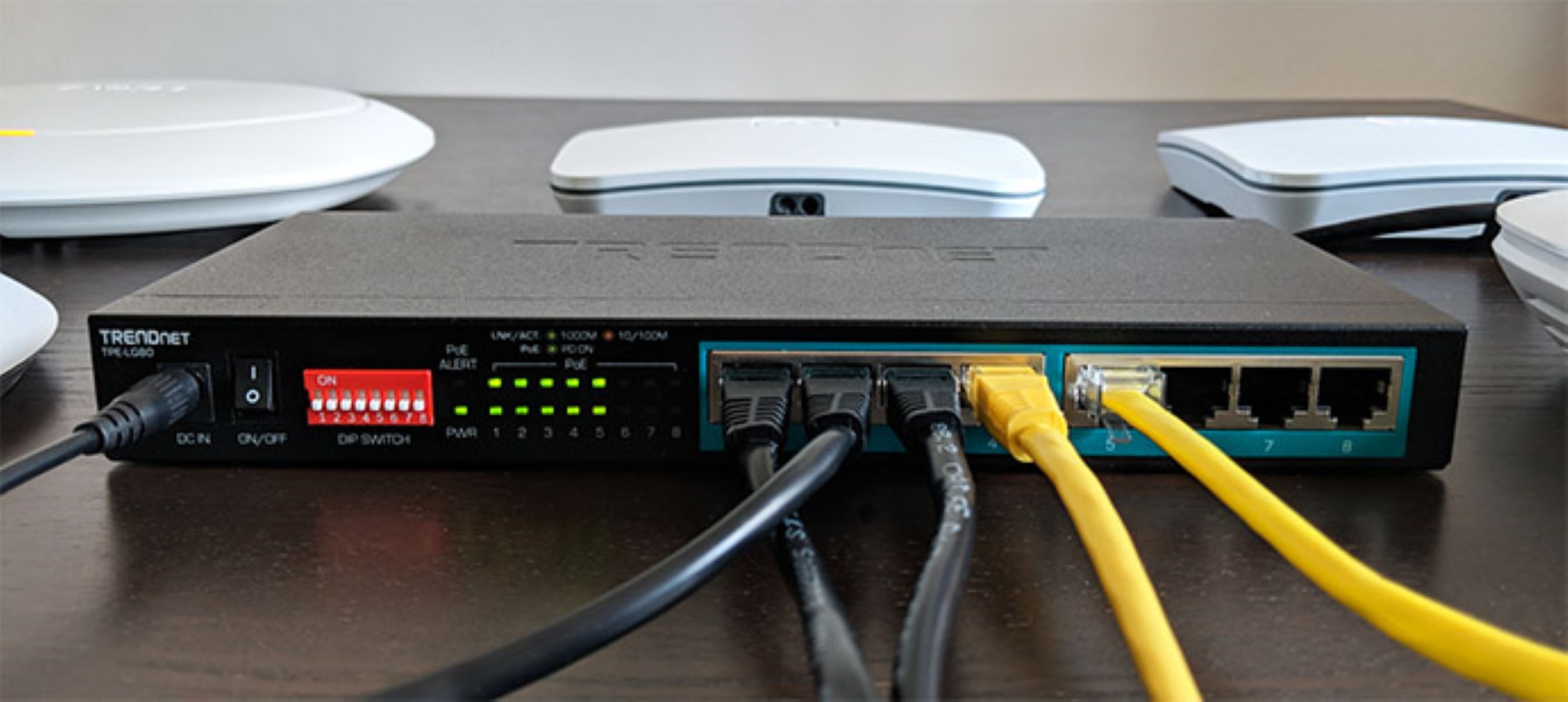Introduction
Network switches play a pivotal role in facilitating seamless communication and data transfer within a network. As businesses expand and technology advances, the demand for larger network switches becomes increasingly prevalent. However, determining the appropriate size of a network switch involves a multifaceted evaluation of various factors. In this article, we will delve into the considerations and methodologies for determining the optimal size of a network switch to meet the specific requirements of your network infrastructure.
Whether you are a small business with a modest network setup or a large enterprise with extensive networking needs, the size of your network switch is a crucial determinant of your network's efficiency and performance. Understanding the nuances of network switches and the factors that influence their size is essential for making informed decisions that align with your network's current and future demands.
As we navigate through the intricacies of network switch sizing, it is important to approach the topic with a comprehensive perspective. By exploring the technical, logistical, and operational aspects of network switches, we can gain a deeper understanding of the considerations that underpin the selection of an optimal switch size. Whether you are a network administrator, an IT professional, or a business owner seeking to optimize your network infrastructure, this exploration will provide valuable insights into the process of choosing the right network switch size for your specific needs.
In the subsequent sections, we will unravel the complexities of network switch sizing, shedding light on the key factors that influence this decision-making process. By examining the technical specifications, scalability requirements, and performance expectations of network switches, we will equip you with the knowledge and discernment necessary to make well-informed choices. Let's embark on this journey to demystify the intricacies of network switch sizing and empower you to optimize your network infrastructure effectively.
Understanding Network Switches
Network switches are pivotal components of modern network infrastructure, serving as the central hub for interconnecting devices and facilitating the seamless transfer of data packets. Unlike hubs, which indiscriminately broadcast data to all connected devices, switches intelligently direct data to its intended destination, optimizing network efficiency and reducing congestion.
At their core, network switches operate by using MAC addresses to identify and route data to the appropriate devices within a network. This process, known as packet switching, enables switches to efficiently manage data traffic, enhancing the overall performance of the network. Additionally, switches can operate at different layers of the OSI model, including Layer 2 and Layer 3, each offering distinct functionalities and capabilities.
Layer 2 switches primarily focus on MAC address-based forwarding, making them ideal for local area networks (LANs) where devices are in close proximity. On the other hand, Layer 3 switches incorporate routing capabilities, allowing them to make forwarding decisions based on IP addresses, thereby enabling inter-VLAN routing and more sophisticated network configurations.
Moreover, the size of a network switch refers to its capacity to accommodate a certain number of ports, each of which can connect to a device or another network segment. Switch sizes can vary significantly, ranging from compact switches with a handful of ports to high-density switches capable of supporting hundreds of connections. As network demands evolve, the need for larger switches that can accommodate additional devices and data traffic becomes increasingly prevalent.
Understanding the fundamental principles and functionalities of network switches is crucial for evaluating their size requirements. By grasping the role of switches in directing data traffic, the distinctions between Layer 2 and Layer 3 switches, and the significance of switch port capacity, network administrators and IT professionals can make informed decisions when determining the optimal size of a network switch for their specific networking needs.
Factors to Consider When Choosing a Network Switch Size
When contemplating the size of a network switch, several critical factors come into play, each exerting a substantial influence on the selection process. By carefully evaluating these factors, network administrators and IT professionals can make informed decisions that align with the unique requirements of their network infrastructure.
- Port Density: The number of ports required on a network switch is a fundamental consideration. Assessing the current and anticipated number of devices that need to be connected to the switch is essential for determining the appropriate port density. Additionally, accounting for potential network expansion and scalability requirements is crucial to avoid future limitations.
- Throughput and Bandwidth: Understanding the expected data traffic and bandwidth requirements within the network is imperative. Higher throughput switches with increased bandwidth capabilities are essential for networks handling substantial data volumes, multimedia content, or demanding applications. Evaluating the current and projected data transfer needs is essential for selecting a switch with adequate throughput capacity.
- Power over Ethernet (PoE) Support: For networks that incorporate PoE-enabled devices such as IP phones, wireless access points, or surveillance cameras, the switch’s ability to provide power over Ethernet becomes a crucial consideration. Assessing the PoE requirements of the network devices and ensuring that the switch can deliver the necessary power output is vital.
- Redundancy and High Availability: In mission-critical environments where network downtime is intolerable, redundancy and high availability features are paramount. Evaluating the switch’s support for redundant power supplies, hot-swappable components, and failover mechanisms is essential for ensuring uninterrupted network operations.
- Management and Monitoring Capabilities: The switch’s management features, including remote monitoring, configuration options, and security protocols, play a significant role in network administration. Assessing the management capabilities and ensuring compatibility with existing network management systems is crucial for streamlined operations and effective network oversight.
By meticulously considering these factors and their implications on network performance, scalability, and operational efficiency, network administrators can navigate the process of choosing the right size of network switch with confidence and acumen. Each factor contributes to the overarching goal of optimizing the network infrastructure to meet present demands while accommodating future growth and technological advancements.
Determining the Size of Network Switch You Need
Arriving at the optimal size of a network switch necessitates a comprehensive assessment of the network’s current state, anticipated growth, and specific operational requirements. By employing a systematic approach to evaluate these factors, network administrators can effectively determine the size of the switch that best aligns with the network’s present and future needs.
1. Network Assessment: Conducting a thorough evaluation of the existing network infrastructure is the foundational step in determining the required switch size. This assessment should encompass the number and types of connected devices, data traffic patterns, and the current network topology to gain a holistic understanding of the network’s dynamics.
2. Scalability Requirements: Anticipating the network’s growth trajectory is crucial for selecting a switch that can accommodate future expansion. Considering factors such as projected increases in device connectivity, data traffic volume, and the integration of new technologies enables network administrators to make informed decisions that align with the network’s long-term scalability needs.
3. Performance Demands: Assessing the performance demands of the network, including throughput requirements, latency sensitivity, and application-specific needs, is essential for choosing a switch with the requisite capabilities. Networks handling high-bandwidth applications, real-time communications, or data-intensive operations necessitate switches with robust performance attributes.
4. Budgetary Considerations: Balancing the network’s requirements with budgetary constraints is a critical aspect of selecting the right switch size. Evaluating the cost implications of different switch sizes, considering total cost of ownership, and weighing the long-term benefits against initial investments are essential for making financially prudent decisions.
5. Future-Proofing: Given the rapid evolution of technology and networking standards, future-proofing the network infrastructure is a prudent strategy. Choosing a switch size that not only meets current needs but also incorporates features such as advanced management capabilities, support for emerging technologies, and scalability options ensures that the network remains adaptable and resilient in the face of technological advancements.
By methodically evaluating these considerations and aligning them with the network’s specific requirements, network administrators can effectively determine the size of the network switch that optimally caters to the network’s current demands while accommodating future growth and technological advancements.
Conclusion
Choosing the appropriate size of a network switch is a strategic decision that significantly influences the efficiency, performance, and scalability of a network infrastructure. By navigating the complexities of network switch sizing and considering factors such as port density, throughput, PoE support, redundancy, and management capabilities, network administrators and IT professionals can make informed choices that align with their network’s unique requirements.
Understanding the fundamental principles of network switches, including their role in directing data traffic, the distinctions between Layer 2 and Layer 3 switches, and the significance of switch port capacity, is essential for evaluating their size requirements. Furthermore, conducting a comprehensive assessment of the network’s current state, scalability needs, performance demands, and budgetary considerations empowers decision-makers to determine the optimal size of a network switch that caters to both present needs and future growth.
As technology continues to advance and networks evolve, the process of determining the right size of a network switch remains dynamic and multifaceted. By embracing a forward-thinking approach that encompasses future-proofing strategies and scalability considerations, network administrators can position their networks to adapt to emerging technologies and evolving operational demands.
Ultimately, the size of a network switch serves as a cornerstone of an efficient and resilient network infrastructure. By diligently evaluating the factors that underpin the selection of switch size and aligning them with the network’s specific requirements, organizations can optimize their network infrastructure to support seamless communication, robust data transfer, and scalable connectivity.

























